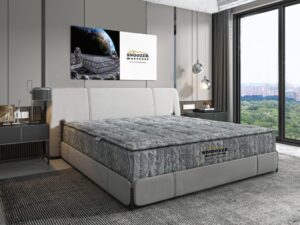In the UAE, kitchen design is no longer just about functionality. It’s becoming a reflection of heritage, hospitality, and how families live today. From the communal ethos of the majlis to the open-plan sophistication of luxury apartments in Dubai, kitchens in the Emirates are being shaped by more than just trends—they’re rooted in culture.
This shift isn’t only visible in ultra-premium villas or high-end developments. Even modest homes are seeing layout decisions and design choices that echo cultural preferences passed down over generations. Let’s unpack how this regional influence is redefining modern kitchens across the UAE.
What Is the Cultural Role of the Kitchen in the UAE?
Traditionally, kitchens in Emirati homes were separate, service-oriented spaces. Cooking was private, often handled by domestic help, while guests gathered in the majlis—a formal sitting area rooted in hospitality, conversation, and coffee rituals.
But as family structures evolve and global design sensibilities merge with regional preferences, the kitchen is slowly becoming part of the social space.
Cultural Shifts Driving Kitchen Evolution
| Influence | Impact on Kitchen Design |
|---|---|
| Majlis tradition | Encourages larger prep and serving spaces for entertaining |
| Family-centric values | Promotes open-plan kitchens where cooking is a shared activity |
| Islamic architectural cues | Favors arches, geometry, and privacy zones within design |
| Gender roles and lifestyle changes | Pushes for more accessible, multi-user-friendly layouts |
| Hosting and hospitality | Leads to the inclusion of second kitchens or hidden prep areas |
Open Kitchen vs. Closed Kitchen: What UAE Buyers Prefer
In apartments and villas, developers are offering both options. Here’s how the decision often plays out:
| Preference | Why Some Buyers Choose It |
|---|---|
| Open kitchens | Encourages social interaction, looks modern and spacious |
| Closed kitchens | Maintains privacy, keeps cooking smells and mess out of sight |
| Hybrid kitchens | Includes sliding doors or partial partitions for best of both worlds |
While open kitchens dominate newer developments, many Emirati families still prefer closed layouts or a combination of both—especially when hosting extended family or religious gatherings.
Key Regional Elements Showing Up in Kitchens
1. Dual Kitchens (Show Kitchen + Prep Kitchen):
Seen in many villas and luxury homes, the show kitchen is beautifully designed for casual use or socialising, while the prep kitchen is functional, hidden, and often used by staff or for larger meals.
2. Arched Niches and Mashrabiya Patterns:
Architectural nods to Islamic design are finding their way into cabinetry details, light fixtures, and shelving alcoves.
3. Custom Coffee Corners:
Inspired by Arabic coffee culture, many homes now include a dedicated station for making and serving gahwa and tea, often complete with brass pots and seating nearby.
4. Large Storage Spaces:
Bulk buying is common in local households, which means pantries, deep drawers, and utility rooms are more spacious than in Western layouts.
How Developers Are Responding
Developers in the UAE are now tailoring kitchen layouts to cater to this cultural blend. Here’s what they’re doing:
| Developer | Cultural Touchpoint |
|---|---|
| Emaar | Offers dual kitchens in larger units, focuses on natural light and social layouts |
| Nakheel | Adds traditional materials like stone or wood-look finishes in premium homes |
| Sobha Realty | Combines Indian and Middle Eastern design cues, uses neutral palettes |
| Danube Properties | Focuses on practical modular kitchen systems for large families |
Common Design Requests from UAE Buyers
1. Space for Family Cooking:
Multiple counters or kitchen islands are designed to allow several users at once.
2. Discreet Ventilation:
Closed kitchens often need powerful but quiet exhaust systems, as frying and spices are common.
3. Prayer-Friendly Layouts:
Orientation, wash areas, and storage design are sometimes planned with religious rituals in mind.
4. Durable Surfaces:
Materials like quartz and ceramic dominate for their easy maintenance and heat resistance.
The Role of Materials and Colours
While international trends favour black and white marble or ultra-minimalist looks, UAE kitchens often lean into warmer tones, wood finishes, and stone textures that feel earthy and familiar.
Popular materials:
- Quartz countertops for durability
- Matte gold or brass accents to reflect regional flair
- White oak and walnut cabinets for warmth
- Textured backsplashes inspired by sand dunes or mosaic tiles
The kitchen in the UAE isn’t just catching up with global trends. It’s shaping them, adding a unique cultural layer that blends modern elegance with deep-rooted traditions. Whether it’s a dedicated majlis pantry, a hidden prep area, or just a simple coffee corner designed to host loved ones, the essence of community is embedded in every design decision.
From majlis to modern, UAE kitchens have evolved—but their soul remains intact. They are not just spaces to cook. They are where conversations brew, families bond, and heritage continues to find a place in contemporary life.

)
)
)
)




